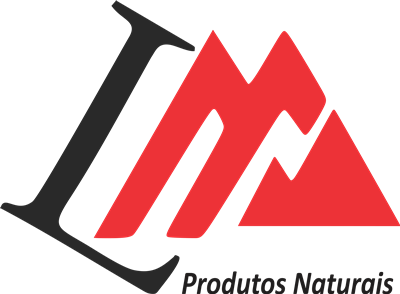With .NET Core, the framework isn’t installed as a component of the operation system. The framework is delivered by NuGet to the computer running the build process. Furthermore, azure devops benefits .NET Core libraries that are packaged as NuGet components have been elevated to framework status and are delivered in exactly the same way as .NET Core SDK components are.

You’ll be using a local SQL Server instance, and the build script will destroy and recreate your local database every time you run the script. Component-level integration tests will ensure that the database schema and ORM configuration work in unison to persist and hydrate objects in your domain model. Figure 19 shows the full build script executive with “quiet” verbosity level enabled. In my professional work, I seldom come across a client with a .NET application that fully runs without SQL Server. Given that, you can conclude that setting up a database for use in the continuous integration build process is a normal and necessary step that must be included.
Step 1: On Terraform Cloud, Begin Adding a New VCS Provider
In addition, if developers do not want to use Microsoft’s Team Explorer Everywhere plug-in for Eclipse, they can choose to use eGit[19] to connect to Azure DevOps. Azure DevOps supports Visual Studio 2010 and later, Microsoft Test Manager (MTM) 2012, and 2013. Codefresh is a modern alternative to Azure DevOps built specifically for Kubernetes applications and teams that want to adopt the GitOps methodology.

Azure DevOps can use the Team Build Services rather than its own built-in build services. The same reporting IDE that enables inspection and analysis of Azure DevOps elements can be applied to the Azure DevOps Server and its contents as well. Azure Boards can be used to plan, track, and discuss work across teams using the Agile planning tools that are available. It also offers a unique set of capabilities, including native support for Scrum and Kanban. You can also create customizable dashboards, and it offers integrated reporting and integration with Microsoft Teams and Slack.
Production Environment
And with the Azure cloud, any infrastructure operation becomes like electricity and telephone service, which companies have always relied on outside parties to provide. A key finding of DORA’s State of DevOps report was that elite performers take full advantage of automation. From builds to testing to deployments and even security configuration changes, elite performers have a seven times lower change failure rate and over 2,000 times faster time to recover from incidents. Without adding any code, you’ll see that the Quickstart build takes almost three minutes to complete. When you investigate, you’ll find that you can run the same steps on your local computer in under a minute. Some of the architecture of the hosted build agents is responsible for that, and some of the structure of the build template is responsible.
The first time you clone the repository, you’ll see quite a bit of NuGet restore activity that you won’t see on subsequent builds because these packages are cached. Figure 18 shows the dotnet.exe restore output that you’ll only see the first time after clicking click_to_build.bat. During deployments of this environment type, data isn’t reloaded every time, and automated database schema migrations run against the existing database and preserve the data. This configuration ensures that the database deployment process will work against production when deployed there. And, because of the nature of this environment’s configuration, it can be appropriate for running some non-functional test suites in the background.
Deep Dive into Azure DevOps
That argument isn’t settled, but for .NET Framework applications, my advice has been to check in all your dependencies, including packages. Azure Repos is the version control system in the Azure DevOps family. It supports the old TFVC format of source control and also an unlimited number of private or public Git repositories. Azure Repos not only works with Visual Studio, but it also works with any other Git client, such as TortoiseGit, which is one of my favorites. Because you’re producing release candidate packages, you need a good place to store them. You could use a file system or the simple artifacts capability of Azure DevOps but using the rock-solid package management infrastructure of NuGet is the best current method for storing these.

That model just doesn’t fit the nature of the data you’re trying to store. In this same way, the schema of the built-in process templates won’t fit your organization. Once you have your model, you need to specify the process of each major entity (work item). For example, if you were writing an article or a book, you might create a Chapter work item and specify the status progression on the Kanban board like that shown in Figure 13. Pipelines are the CI/CD tool that facilitates automated building, testing, and deployment.
The security e-book for Azure DevOps & GitHub
Finally, you’ll discover how to manage your projects using Scrum and Kanban along with how to manage the QA testing effort of your software project. When you’re finished with this course, you’ll have a foundational knowledge of software project delivery using Azure DevOps that will help you as you move forward to successful software delivery and DevOps. Azure DevOps can be integrated with the Azure DevOps Server — formerly the Team Foundation Server — the on-premises version of Azure DevOps. This is done through an Azure DevOps Client application programming interface that exposes the Azure DevOps Server functions. These include a Team Explorer for browsing and managing items in team projects and a Source Control Explorer that provides version control and check-in and check-out functions.
- You’ve also seen how quickly you bump into the limitations of the Quickstarts.
- If it breaks at this stage, a team member knows that they need to back out their change and try again.
- Need free advice on migrating an existing application from a legacy platform like WinForms, ASP Classic, Access, or FoxPro to a cloud or Web application?
- Azure DevOps is built using Windows Communication Foundation web services.
- Azure DevOps provides a wide variety of services for DevOps teams so that they can plan, work, collaborate on code development, and build and deploy software and services.
- In your organization, you may need multiple instances of one or more of the environment types, but in the application here, you have one environment per type for demonstration purposes.
This method offers the API surface area for downstream deployments and other tools, like Octopus Deploy. With any build process, the version number is a foundational element. If you’re unsure what version of your software is running, there’s no way to report bugs. A common feature in a test environment is for the bottom of the screen to show the user what version https://www.globalcloudteam.com/ of the software is being run so that bug reports can include this information. If the packaged software doesn’t include any kind of label or embedded version number, contact the manufacturer. The template in the Quickstart doesn’t pass on the build’s version number to the dotnet.exe command line, so there’s no chance for embedding a version number.
Search code, repositories, users, issues, pull requests…
Earlier, I stressed how important versioning is in a DevOps pipeline. By determining ahead of time what the process is that takes a certain level of work item from creation to done, you organize your team. For example, if you have a stakeholder designated as the person who’ll give the go-ahead on the sketch of a screen before it’s developed, that stakeholder should have a column where they own the work within it. Each work item is represented by a visual card on the Kanban board, and the cards in their column are theirs to work. In order to set up your DevOps environment, you need an Azure subscription.

The build script also runs tests that output .trx files so that Azure Pipelines can show and track the results of tests as they repeatedly run over time. Finally, you push the application in its various components to Azure Artifacts as .nupkg files, which are essentially .zip files with some specific differences. You’ll certainly want to customize the configuration, but your suggested configuration works great in 80% of the cases. If you’ve already read the book “The Phoenix Project” by Kim, Spafford, and Behr, you’ll recognize the “three ways of DevOps” implemented as you read through this section. Once you have your Azure DevOps project created, take a glance at your project settings and select the products that you’d like enabled.
AWS CodePipeline vs Azure DevOps
Since these are standard database and cube structures, any tool which can point to these data sources can report from them. This includes tools such as Cognos, Tableau, Excel and other reporting tools. New reports can be created using Report Builder for SSRS and any of the existing reports can be modified. How do you manage and streamline the development and delivery of a complex software project?



